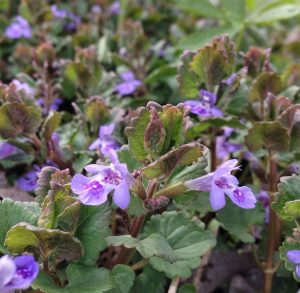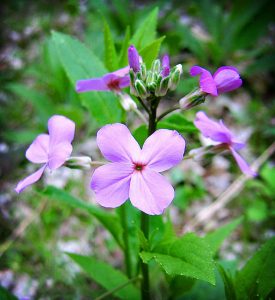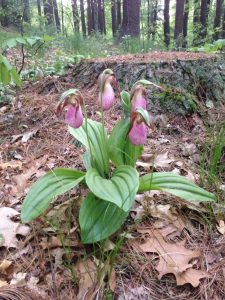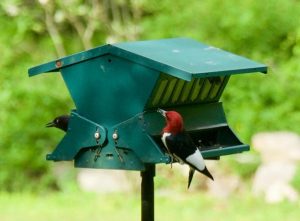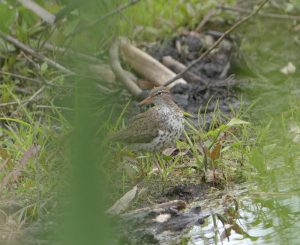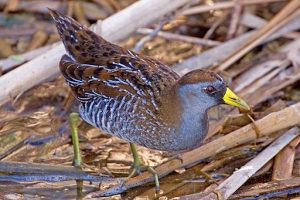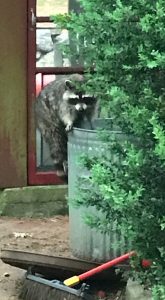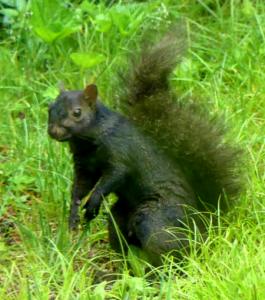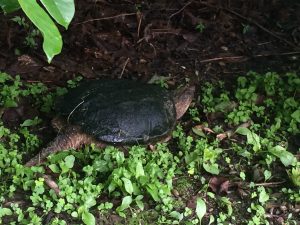Written by Gwyn Loud for the Lincoln Land Conservation Trust. She welcomes your sightings, questions, and photos at 781-259-8690 or at gwynloud555@gmail.com.
The weather has been erratic over the past month, with days rainy, sunny, hot, and cold. The week leading up to Memorial Day was gorgeous and perfect for planting gardens. But just when we thought our cold wet spring was over, back we went into the forties overnight and winter jackets came out in the morning. Summer will start officially on June 21, the summer solstice in the Northern hemisphere. The sun will be at its highest point in the sky and thereafter the hours of daylight gradually diminish.
Horse chestnut and black cherry trees bloomed profusely over the past few weeks and now black locust trees are starting to flower. Roadside flowers to notice include wild geranium (lavender), celandine (yellow), and dame’s rocket. The latter, with white, pink, or purple flowers, is an escapee from gardens and looks like phlox but is actually in the mustard family. Hawkweed, buttercups, and white clover are blooming in lawns and soon the flowers of honeysuckle and multi-flora rose will scent the air. The low-growing gill-over the ground, aka ground ivy, grows easily in waste places and has long trailing stems and small purple flowers. In the woods the lady’s slippers have gone by; a walker in the Beaver Pond woods found an unusual one with four flowers. Tiny green berries are forming on low bush blueberries, providing food for wildlife in weeks to come. The prolific flowering of many trees and shrubs this spring has led to very high pollen counts, a fact allergy sufferers know well. As I am writing, clouds of pine pollen are wafting through the air
The spring avian migration is over and birds are busy raising families, with some already onto second broods. Birds will sing less as summer progresses, since the main purposes of song, to attract mates and establish territories, will have been accomplished. Nesting is a precarious occupation because hazards abound, starting with predators stealing or destroying eggs. I suspect a raccoon stole the eggs from my nesting bluebirds. House sparrows are also know to do this. If you hear birds such as blue jays and robins making loud alarm calls, look up and you might see a hawk or crow making off with a young fledgling plucked from a nest. According to a Mass. Audubon article, “Only 30 percent of young songbirds survive their first year of life. This is nature’s way of maintaining population sizes that the environment can support.”
When walking in the woods listen for the musical song of the wood thrush and the ovenbird calling “teacher teacher teacher”, crescendoing as it calls. In the canopy you might hear the harsh ascending wheep of the great crested flycatcher or the scarlet tanager, whose song is described as like a robin’s but with a sore throat.
Several interesting birds have taken up residence in the marsh behind St. Anne’s Church. Great Blue herons have built two nests high in dead trees and a birder spotted three Virginia rails, two spotted sandpipers, a sora, and two American woodcock. Birds of note seen at Drumlin Farm include a pair of green herons, an olive-sided flycatcher, and a northern water thrush. On Farrar Pond look for family of mute swans with cygnets. Pileated woodpeckers and owls have been reported from various parts of town and bobolinks have established territories in several fields. A black-billed cuckoo was heard in the marsh by the Baker Bridge fields and a Beaver Pond Road family was thrilled to see a red-headed woodpecker at their feeder, an unusual bird here. Wayne Petersen writes, “This woodpecker was once common throughout its range, but its numbers have declined rapidly over the past century. Since the introduction of the European Starling, Red-headed Woodpeckers have been largely out competed for nesting cavities”.
In terms of insects, mosquitoes are numerous this spring, thanks to all the rain. No-see-ums, also known as biting midges, are tiny enough to squeeze through screens and are in a family of flies containing over 5000 species world-wide! Butterflies are more noticeable now that the weather is warming. I have seen tiger and black swallowtails, and a painted lady, and an observer reported an American copper. Although no one has reported a monarch butterfly to me so far, the Journey North website (https://maps.journeynorth.org/) shows that monarchs have definitely arrived in New England. Fortunately, winter moth caterpillars are at an all-time low, thanks to the success of a biological control in the form of a tiny fly. For more details on this research project by Prof. Joe Elkinton and his team at UMass Amherst, go to : https://www.umass.edu/magazine/spring-2019/winter-moth
Our local mammals seem to be thriving. Several people have reported seeing fishers, raccoons, coyotes, red foxes, and, of course, deer. Chipmunks seem to be everywhere; sadly, many end up as roadkill. Harold McAleer took a photo of a black squirrel; black squirrels are not a separate species but are gray squirrels with a genetic condition called melanism. I am glad to see our usual couple of bats circling over the garden at dusk. In May, a river otter was swimming in a flooded pond at Drumlin Farm.
Another reminder: please be careful not to hurt turtles in the road as they make their way to lay their eggs in sandy soils. Water snakes and garter snakes have been seen, gray tree frogs continue to chorus, and toads are hopping about in gardens.
Looking skyward, Jupiter is high in the night sky through June and July. Venus is now a morning planet, rising about 4AM. If you want to see Mercury, on June 18,19, and 20 it will be very close to Mars low in the west about forty minutes after sunset. And on July 4, the Earth will be at aphelion (farthest point from the sun) for 2019, at 94,573,221 miles!
© Gwyn Loud


